Digital Poster
Fetal Brain Imaging
ISMRM & ISMRT Annual Meeting & Exhibition • 10-15 May 2025 • Honolulu, Hawai'i

 |
Computer Number: 129
3785. Towards
automated fetal brain biometry reporting for 3D T2w 0.55-3T MRI
at 19-40 weeks gestational age range
A. Luis, A. Uus, J. Matthew, S. Arulkumaran, A. Egloff
Collado, V. Kyriakopoulou, S. Neves Silva, J. Aviles
Verdera, M. Hall, S. McElroy, K. Colford, J. Hajnal, J.
Hutter, L. Story, M. Rutherford
King's College London, London, United Kingdom
Impact: The benefits of automating the time-consuming
manual biometry method include improved diagnostic accuracy,
confidence and reliability of derived measurements, enabling
precise quantification of fetal brain development, as well
as improved workflow efficiency and turnaround time for
radiology reports.
|
|
 |
Computer Number: 130
3786. Pre-
and Post-operative Regional Fetal Brain Growth in Fetuses with
Spina Bifida Aperta

K. Payette, R. Kottke, P. Grehten, L. Mazzone, M. Meuli,
B. Latal, N. Ochsenbein-Kölble, B. Padden, U. Moehrlen,
A. Jakab
University Children's Hospital Zurich, University of Zurich, Zurich, Switzerland
Impact: Longitudinal fetal brain MRI of spina bifida
patients has the potential to expand our knowledge of fetal
brain development in neural tube disorders.
|
|
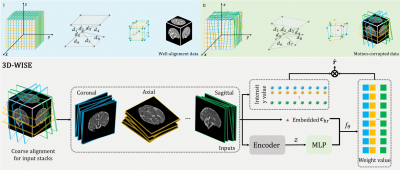 |
Computer Number: 131
3787. Super-resolution
Reconstruction of Fetal Brain MRI Through Learning of Multi-view
Interpolation Weights
S. Huang, K. Zhang, Z. Lian, G. Chen, D. Shen
School of Biomedical Engineering & State Key Laboratory of Advanced Medical Materials and Devices, ShanghaiTech University, Shanghai, China
Impact: Our end-to-end fetal brain super-resolution
approach bypasses traditional two-step iterative
optimization paradigm, and substantially reduces
reconstruction time. It eliminates the need for
slice-to-volume registration, and shifts the focus of
implicit neural representation from addressing appearance
estimation issues to motion estimation.
|
|
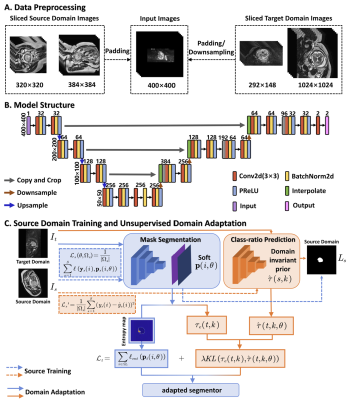 |
Computer Number: 132
3788. FetalSFUDA:
Source-Free Unsupervised Domain Adaptation for Fetal Brain
Extraction from Different Centers or MRI Sequences
Y. Li, M. Liu, J. Zhu, H. Yang, J. Zheng, Z. Li, Y. Liao, H.
Qu, Q. Tian
Beihang University, Beijing, China
Impact: Source-free unsupervised domain adaptation
addresses the problem that the pre-trained fetal brain
extraction model is inaccurate for data acquired with
different scanning hardware and parameters. Moreover, our
work supports cross-center fetal studies and promotes
practical clinical diagnostic applications.
|
|
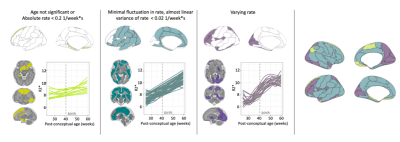 |
Computer Number: 133
3789. From
Fetal to Neonatal: Divergent Trajectories of Human Brain Iron
Development Across Regions Revealed by Whole-Brain R2*
Assessment
L. Ji, B. Chen, I. Menu, C. Trentacosta, M. Thomason
New York University School of Medicine, New York, United States
Impact: These findings provide the first insights into
R2* development across birth longitudinally, laying the
foundation for future research into the neural mechanisms
underlying iron deficiency-related developmental
disturbances.
|
|
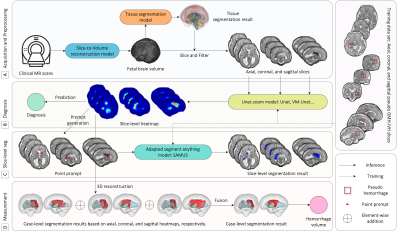 |
Computer Number: 134
3790. FreeHemoSeg:
Label-Free Deep Learning Framework for Automated Segmentation of
Fetal Brain Germinal Matrix and Intraventricular Hemorrhage
M. Liu, Y. Liao, J. Zhu, H. Li, H. Yang, J. Zheng, Z. Li, Z.
Li, H. Qu, Q. Tian
Tsinghua University, Beijing, China
Impact: FreeHemoSeg provides accurate, automated
segmentation and diagnosis of GMH-IVH without hemorrhage
data and labels for training, substantially simplifying
clinical workflows, aiding early diagnosis and prognosis,
enabling hemorrhage volume measurement, supporting
large-scale neuroscience research, and enhancing prenatal
care and management strategies.
|
|
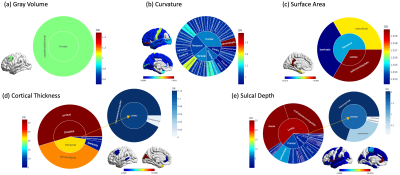 |
Computer Number: 135
3791. A
Comprehensive Cortical Analysis for Fetal Growth Restriction
using High-resolution MRI
S. Huang, L. Kong, S. Bai, Z. Lian, Q. Xu, G. Chen, M. Zhao,
D. Shen
School of Biomedical Engineering & State Key Laboratory of Advanced Medical Materials and Devices, ShanghaiTech University, Shanghai, China
Impact: This study analyzes fetal growth restriction
(FGR) impacts on cortical development, identifying altered
brain regions like the insula, cuneus, and rostral anterior
cingulate, affecting sensory integration, cognition, and
emotional regulation, and also highlighting areas of both
vulnerability and resilience.
|
|
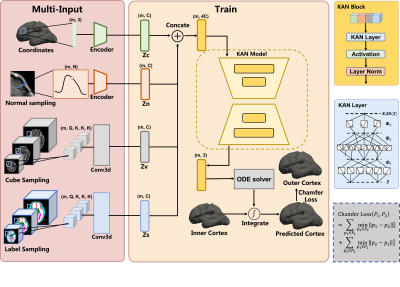 |
Computer Number: 136
3792. CortexKAN:
Multi-input KAN for fetal cortical surface reconstruction
H. Li, M. Liu, Y. Liao, J. Zhu, J. Zheng, H. Yang, Z. Li, H.
Qu, Q. Tian
Tsinghua University, Beijing, China
Impact: CortexKAN model achieves superior performance in
fetal cortical surface reconstruction, outperforming
existing methods. Additionally, a training strategy without
cortical labels was demonstrated effective, enabling
accurate reconstruction when surface labels are unavailable.
|
|
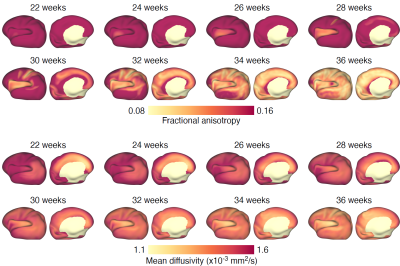 |
Computer Number: 137
3793. Spatiotemporal
Patterning of Cortical Microstructure During Gestation
S. Ahmad, P-T Yap
The University of North Carolina at Chapel Hill, Chapel Hill, United States
Impact: In-utero characterization of cortical
microstructure offers key insights into the development of
brain connections and functions, aiding early detection of
abnormalities linked to malformation and dysfunction.
|
|
 |
Computer Number: 138
3794. Spatio-Temporal
Ganglionic Eminence MRI Atlas
T. Ciceri, A. Righini, L. Squarcina, A. Ferro, F. Arrigoni,
C. Parazzini, N. Persico, S. Boito, I. Cetin, G. Conte, F.
Triulzi, A. Bertoldo, P. Brambilla, D. Peruzzo
IRCCS Eugenio Medea, Bosisio Parini (LC), Italy
Impact: The spatio-temporal fetal MRI atlas of the GE
allows researchers to study potential future clinical
conditions attributable to GE alterations in pregnancy. The
GE reached its maximum expansion at 21 weeks, followed by a
pronounced reduction throughout the pregnancy.
|
|
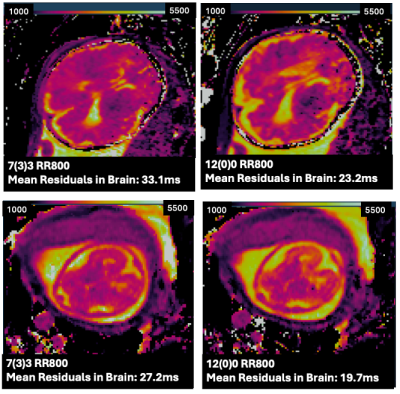 |
Computer Number: 139
3795. Optimisation
and Validation of Fetal Brain T1 Mapping under Breath-Hold at
1.5T: Utilising Look-Locker and MOLLI Methods
M. Lowe, K. Colford, K. Clair, C. Fauni, W. Norman, J-D
Tournier, A. Price
Guys and St Thomas’ NHS Foundation Trust, London, United Kingdom
Impact: Performing T1 mapping on a cohort of fetal
participants will allow a more comprehensive dataset to be
collected, enabling T1 contrast to be better optimised in
fetal imaging and expanding on the T1 characterisation
available in the literature.
|
|
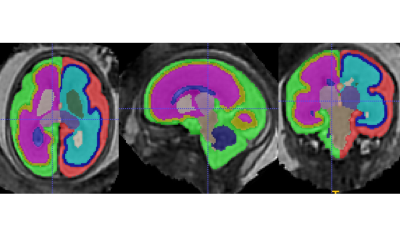 |
Computer Number: 140
3796. Brain
volumetry and T2* relaxometry in fetuses with Congenital
Diaphragmatic Hernia
C. Bradshaw, J. Aviles Verdera, M. Rutherford, M. Hall, A.
Uus, A. Arechvo, M. Moser, K. Nicolaides, J. Hutter, L.
Story
King's College London, London, United Kingdom
Impact: This study has demonstrated that alterations in
brain development have antenatal antecedents in fetuses with
CDH. Further work is required to correlate these findings
with longer term neurodevelopmental outcomes to aid
prognostication and further management.
|
|
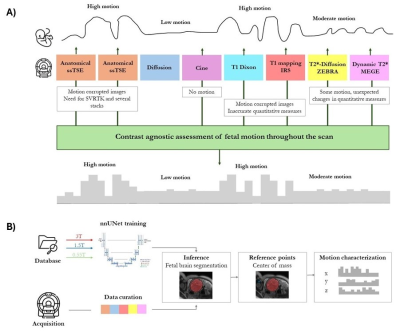 |
Computer Number: 141
3797. Watch
me move: Generalizable Fetal Brain Segmentations for Automatic
Fetal Head Motion Tracking throughout an MRI Scan

J. Aviles Verdera, K. Payette, S. Neves Silva, D. Cromb,
R. Tomi-Tricot, M. Hall, S. Bansal, K. St Clair, S.
Counsell, L. Story, M. Rutherford, J. Hajnal, J. Hutter
King's College London, London, United Kingdom
Impact: First emerging signatures of human neurological
development can be systematically and automatically assessed
retro- and prospectively on fetal MRI. Signatures of fetal
activity and their correlation to fetal health can offer new
opportunities for research and future clinical application.
|
|
 |
Computer Number: 142
3798. Negative
Impacts of Germinal Matrix-ventricular Hemorrhage on Fetal Brain
Development

H. Li, Y. Liao, J. Zhu, M. Liu, J. Zheng, H. Yang, Z.
Li, Z. Li, Q. Tian, H. Qu
School of Biomedical Engineering, Tsinghua University, Beijing, China
Impact: This study used a large dataset to clarify the
negative consequence of GMH-IVH on prenatal and postnatal
brain development, which can lead to improved diagnosis,
management strategies, and potentially better outcomes for
affected fetuses and infants.
|
|
 |
Computer Number: 143
3799. CONDITIONAL
DEEP GENERATIVE NORMATIVE MODELING FOR STRUCTURAL AND
DEVELOPMENTAL ANOMALY DETECTION IN THE FETAL BRAIN
S. You, C. S. Amador Izaguirre, G. T. Milo, S. Jeong, H. J.
Yun, P. E. Grant, K. Im
Boston Children's Hospital, Harvard Medical School, Boston, United States
Impact: The proposed anomaly detection framework offers
a new tool for clinicians to identify fetal brain anomalies
with high accuracy, enhancing the precision of prenatal
diagnostics. This can lead to earlier and more targeted
interventions for neurodevelopmental abnormalities,
potentially improving outcomes.
|
The International Society for Magnetic Resonance in Medicine is accredited by the Accreditation Council for Continuing Medical Education to provide continuing medical education for physicians.